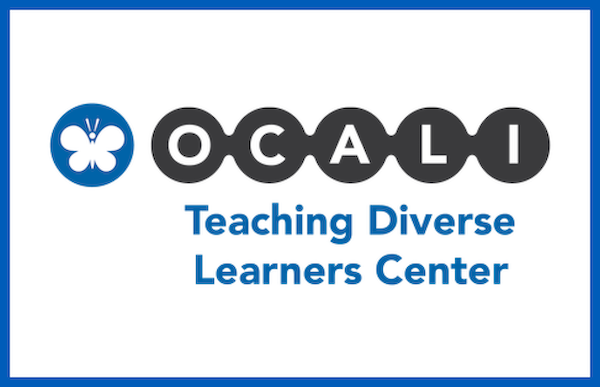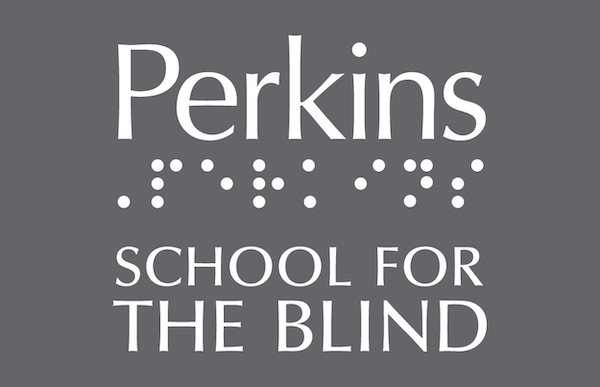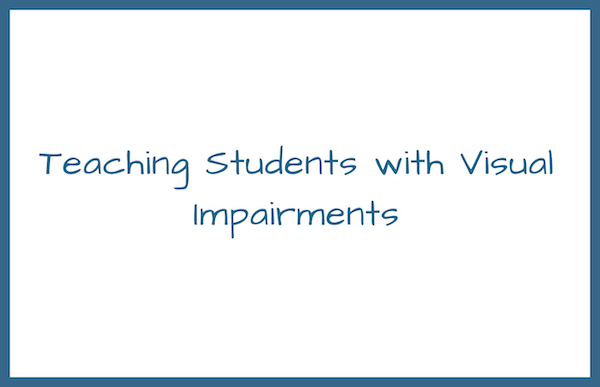Ohio Guidelines for Working with Students who are Blind or Visually Impaired
Planning and Instruction

Full membership in the classroom and the community enriches the educational experience for everyone. Encouraging learners to share experiences and understand each other’s unique qualities from an early age builds understanding and acceptance. Teachers can set high expectations recognizing that a visual impairment does not necessarily hinder the learning that happens in the classroom but may change the way in which course content is accessed and delivered. Understanding and addressing the individualized learning needs of young learners allows for their increased participation in the learning process and opportunities for involvement in additional areas, such as extracurricular activities.
Video: Least Restrictive Environment
This video is being reviewed for audio description.
What is Audio Description?
When Audio Description (AD) is enabled, descriptive language narrates what is on the screen. To learn more, visit our accessibility webpage.
Video Player Help
Kaltura Video Hosting: This website uses Kaltura, a video hosting company, to serve video content. If you are having difficulty viewing videos on this site, it may mean that your location (e.g., school district, organization) is blocking or filtering the Kaltura website. Please contact your IT personnel to resolve this issue.
Accessibility: We strive to make this website accessible for all users, including people with disabilities. To learn more visit our accessibility webpage.
Captions / Transcript
After hitting play you can access an interactive transcript for this video by selecting the Show Transcript icon![]() in the top right corner of the video when you select play.
in the top right corner of the video when you select play.
You can turn on captions by selecting the Enable Captions icon![]() in the bottom right corner. Captions can also be turned on by selecting the Settings icon
in the bottom right corner. Captions can also be turned on by selecting the Settings icon![]() , where you can also set your caption preferences.
, where you can also set your caption preferences.
When available, you can use Spanish subtitles for this video by selecting Settings![]() and choosing Spanish in the Captions drop down menu.
and choosing Spanish in the Captions drop down menu.
In IDEA, the least restrictive environment (LRE) means that a learner who has a disability must have the opportunity to be educated with peers without disabilities to the greatest extent appropriate. When considering LRE for learners with a visual impairment, it is important to recognize that each learner is unique with regard to his or her needs for accommodations and types of programming. Therefore, inclusion in LRE may require a range of supplementary aids and services, including accommodations, materials, and personnel. It is comparable to a “backpack” of supports that learners can carry with them as they transition between settings throughout their day and as they grow, when their educational needs may change. Such changes make age-appropriate assessment and planning crucial for setting the stage for success.
While considering the supports and services needed to enable instruction in the expanded core and general curriculum, the team must also be mindful of how students will access information to increase participation and learning that can take place in a range of environments among their peers. The key to ensuring that a student has access in the learning environment is team collaboration that includes assessment and feedback from a TVI. Ongoing communication can ensure that the student with a visual impairment is included in instruction using appropriate accommodations and modifications. For example, if the learner will need a standard textbook or a specialized format (audio, braille, digital, and/or large print), the TVI can assist with ordering the materials as needed. The TVI can also assist with using Federal Quota funds to order accessible educational materials (AEM) produced by the American Printing House for the Blind (APH) for students who are legally blind and registered in the annual Federal Quota Registration of Blind Students.
Generally, the less opportunity students with a disability have to interact and learn with nondisabled peers, the more their learning environment is considered to be restrictive. Careful consideration of where learners spend their time, how services are offered, and the opportunities students have for direct connections with their peers enriches the planning process and, ultimately, the educational experience.
Learners’ needs drive decisions about the environments where services will be provided. Any service delivery option may be appropriate for an individual student at any given time, and the appropriate option may change over time for a particular learner. A variety of service delivery options may need to be considered by the team to meet a given learner’s needs, including general education classrooms, collaborative settings, itinerant teacher services, resource rooms, and self-contained classrooms.




